-
MARKET INTRODUCTION
-
\r\n\r\nDefinition\r\n
-
Scope of the study\r\n\r\nResearch Objective\r\nAssumption\r\nLimitations\r\n\r\n\r\n\r\n\r\n
-
RESEARCH METHODOLOGY
-
\r\n\r\nOverview\r\nData Mining\r\nSecondary Research\r\n
-
Primary Research\r\n\r\nPrimary Interviews and Information
-
Gathering Process\r\nBreakdown of Primary Respondents\r\n\r\n\r\nForecasting Model\r\n
-
Market Size Estimation\r\n\r\nBottom-Up Approach\r\nTop-Down Approach\r\n\r\n\r\nData Triangulation\r\nValidation\r\n\r\n\r\n\r\n\r\n
-
MARKET DYNAMICS \r\n\r\nOverview\r\nDrivers\r\nRestraints\r\nOpportunities\r\n\r\n\r\n
-
MARKET FACTOR ANALYSIS
-
\r\n\r\nValue
-
chain Analysis\r\n
-
Porter's
-
Five Forces Analysis\r\n\r\nBargaining Power of Suppliers\r\nBargaining Power of Buyers\r\nThreat of New Entrants\r\nThreat of Substitutes\r\nIntensity of Rivalry\r\n\r\n\r\n
-
COVID-19 Impact Analysis\r\n\r\nMarket Impact Analysis\r\nRegional Impact\r\nOpportunity and Threat Analysis\r\n\r\n\r\n\r\n\r\n\r\n\r\n
-
Fresh Vegetables Market,
-
BY Type (USD Billion) \r\n\r\nLeafy Greens\r\nRoot Vegetables\r\nFruiting Vegetables\r\nCruciferous Vegetables\r\nLegumes\r\n\r\n\r\n
-
Fresh Vegetables Market,
-
BY Distribution Channel (USD Billion) \r\n\r\nSupermarkets\r\nOnline Retail\r\nFarmers Markets\r\nSpecialty Stores\r\n\r\n\r\n
-
Fresh Vegetables Market,
-
BY Organic Certification (USD Billion) \r\n\r\nOrganic\r\nConventional\r\n\r\n\r\n
-
Fresh Vegetables Market,
-
BY Packaging Type (USD Billion) \r\n\r\nLoose\r\nBags\r\nContainers\r\nPre-packaged\r\n\r\n\r\n
-
Fresh Vegetables Market,
-
BY Regional (USD Billion) \r\n\r\n
-
North America\r\n\r\nUS\r\nCanada\r\n\r\n\r\n
-
Europe\r\n\r\nGermany\r\nUK\r\nFrance\r\nRussia\r\nItaly\r\nSpain\r\nRest of Europe\r\n\r\n\r\n
-
APAC\r\n\r\nChina\r\nIndia\r\nJapan\r\nSouth Korea\r\nMalaysia\r\nThailand\r\nIndonesia\r\nRest of APAC\r\n\r\n\r\n
-
South America\r\n\r\nBrazil\r\nMexico\r\nArgentina\r\nRest of South America\r\n\r\n\r\n
-
MEA\r\n\r\nGCC Countries\r\nSouth Africa\r\nRest of MEA\r\n\r\n\r\n\r\n\r\n\r\n\r\n
-
Competitive Landscape
-
\r\n\r\nOverview\r\nCompetitive Analysis\r\nMarket share Analysis\r\nMajor Growth Strategy in the
-
Fresh Vegetables Market\r\nCompetitive Benchmarking\r\nLeading Players in Terms of Number of Developments
-
in the Fresh Vegetables Market\r\n
-
Key developments and growth strategies\r\n\r\nNew Product Launch/Service
-
Deployment\r\nMerger
-
& Acquisitions\r\nJoint Ventures\r\n\r\n\r\n
-
Major Players Financial Matrix\r\n\r\nSales and Operating Income\r\nMajor Players R&D Expenditure.
-
Company Profiles \r\n\r\n
-
Hormel Foods\r\n\r\nFinancial Overview\r\nProducts Offered\r\nKey Developments\r\nSWOT Analysis\r\nKey Strategies\r\n\r\n\r\n
-
Kraft Heinz\r\n\r\nFinancial Overview\r\nProducts Offered\r\nKey Developments\r\nSWOT Analysis\r\nKey Strategies\r\n\r\n\r\n
-
Calavo Growers\r\n\r\nFinancial Overview\r\nProducts Offered\r\nKey Developments\r\nSWOT Analysis\r\nKey Strategies\r\n\r\n\r\n
-
Bakkavor Group\r\n\r\nFinancial Overview\r\nProducts Offered\r\nKey Developments\r\nSWOT Analysis\r\nKey Strategies\r\n\r\n\r\n
-
Dole Food Company\r\n\r\nFinancial Overview\r\nProducts Offered\r\nKey Developments\r\nSWOT Analysis\r\nKey Strategies\r\n\r\n\r\n
-
Cargill\r\n\r\nFinancial Overview\r\nProducts Offered\r\nKey Developments\r\nSWOT Analysis\r\nKey Strategies\r\n\r\n\r\n
-
Green Giant\r\n\r\nFinancial Overview\r\nProducts Offered\r\nKey Developments\r\nSWOT Analysis\r\nKey Strategies\r\n\r\n\r\n
-
Nestle\r\n\r\nFinancial Overview\r\nProducts Offered\r\nKey Developments\r\nSWOT Analysis\r\nKey Strategies\r\n\r\n\r\n
-
Bonduelle\r\n\r\nFinancial Overview\r\nProducts Offered\r\nKey Developments\r\nSWOT Analysis\r\nKey Strategies\r\n\r\n\r\n
-
Fresh Del Monte Produce\r\n\r\nFinancial Overview\r\nProducts Offered\r\nKey Developments\r\nSWOT Analysis\r\nKey Strategies\r\n\r\n\r\n
-
Ardo\r\n\r\nFinancial Overview\r\nProducts Offered\r\nKey Developments\r\nSWOT Analysis\r\nKey Strategies\r\n\r\n\r\n
-
Chiquita Brands International\r\n\r\nFinancial Overview\r\nProducts Offered\r\nKey Developments\r\nSWOT Analysis\r\nKey Strategies\r\n\r\n\r\n
-
Lassonde Industries\r\n\r\nFinancial Overview\r\nProducts Offered\r\nKey Developments\r\nSWOT Analysis\r\nKey Strategies\r\n\r\n\r\n
-
Taylor Farms\r\n\r\nFinancial Overview\r\nProducts Offered\r\nKey Developments\r\nSWOT Analysis\r\nKey Strategies\r\n\r\n\r\n
-
Del Monte Foods\r\n\r\nFinancial Overview\r\nProducts Offered\r\nKey Developments\r\nSWOT Analysis\r\nKey Strategies\r\n\r\n\r\n\r\n\r\n
-
Appendix \r\n\r\nReferences\r\nRelated Reports\r\n\r\n\r\n\r\nLIST
-
Of tables
-
\r\n\r\nLIST OF ASSUMPTIONS\r\nNorth America Fresh Vegetables Market SIZE ESTIMATES
-
& FORECAST, BY TYPE, 2019-2035 (USD Billions)\r\nNorth America Fresh Vegetables Market SIZE ESTIMATES
-
& FORECAST, BY DISTRIBUTION CHANNEL, 2019-2035 (USD Billions)\r\nNorth America Fresh Vegetables
-
Market SIZE ESTIMATES & FORECAST, BY ORGANIC CERTIFICATION, 2019-2035 (USD Billions)\r\nNorth America Fresh Vegetables
-
Market SIZE ESTIMATES & FORECAST, BY PACKAGING TYPE, 2019-2035 (USD Billions)\r\nNorth America Fresh Vegetables
-
Market SIZE ESTIMATES & FORECAST, BY REGIONAL, 2019-2035 (USD Billions)\r\nUS Fresh Vegetables Market
-
SIZE ESTIMATES & FORECAST, BY TYPE, 2019-2035 (USD Billions)\r\nUS Fresh Vegetables Market
-
SIZE ESTIMATES & FORECAST, BY DISTRIBUTION CHANNEL, 2019-2035 (USD Billions)\r\nUS Fresh Vegetables Market
-
SIZE ESTIMATES & FORECAST, BY ORGANIC CERTIFICATION, 2019-2035 (USD Billions)\r\nUS Fresh Vegetables Market
-
SIZE ESTIMATES & FORECAST, BY PACKAGING TYPE, 2019-2035 (USD Billions)\r\nUS Fresh Vegetables Market
-
SIZE ESTIMATES & FORECAST, BY REGIONAL, 2019-2035 (USD Billions)\r\nCanada Fresh Vegetables Market
-
SIZE ESTIMATES & FORECAST, BY TYPE, 2019-2035 (USD Billions)\r\nCanada Fresh Vegetables Market
-
SIZE ESTIMATES & FORECAST, BY DISTRIBUTION CHANNEL, 2019-2035 (USD Billions)\r\nCanada Fresh Vegetables Market
-
SIZE ESTIMATES & FORECAST, BY ORGANIC CERTIFICATION, 2019-2035 (USD Billions)\r\nCanada Fresh Vegetables Market
-
SIZE ESTIMATES & FORECAST, BY PACKAGING TYPE, 2019-2035 (USD Billions)\r\nCanada Fresh Vegetables Market
-
SIZE ESTIMATES & FORECAST, BY REGIONAL, 2019-2035 (USD Billions)\r\nEurope Fresh Vegetables Market
-
SIZE ESTIMATES & FORECAST, BY TYPE, 2019-2035 (USD Billions)\r\nEurope Fresh Vegetables Market
-
SIZE ESTIMATES & FORECAST, BY DISTRIBUTION CHANNEL, 2019-2035 (USD Billions)\r\nEurope Fresh Vegetables Market
-
SIZE ESTIMATES & FORECAST, BY ORGANIC CERTIFICATION, 2019-2035 (USD Billions)\r\nEurope Fresh Vegetables Market
-
SIZE ESTIMATES & FORECAST, BY PACKAGING TYPE, 2019-2035 (USD Billions)\r\nEurope Fresh Vegetables Market
-
SIZE ESTIMATES & FORECAST, BY REGIONAL, 2019-2035 (USD Billions)\r\nGermany Fresh Vegetables Market
-
SIZE ESTIMATES & FORECAST, BY TYPE, 2019-2035 (USD Billions)\r\nGermany Fresh Vegetables Market
-
SIZE ESTIMATES & FORECAST, BY DISTRIBUTION CHANNEL, 2019-2035 (USD Billions)\r\nGermany Fresh Vegetables Market
-
SIZE ESTIMATES & FORECAST, BY ORGANIC CERTIFICATION, 2019-2035 (USD Billions)\r\nGermany Fresh Vegetables Market
-
SIZE ESTIMATES & FORECAST, BY PACKAGING TYPE, 2019-2035 (USD Billions)\r\nGermany Fresh Vegetables Market
-
SIZE ESTIMATES & FORECAST, BY REGIONAL, 2019-2035 (USD Billions)\r\nUK Fresh Vegetables Market
-
SIZE ESTIMATES & FORECAST, BY TYPE, 2019-2035 (USD Billions)\r\nUK Fresh Vegetables Market
-
SIZE ESTIMATES & FORECAST, BY DISTRIBUTION CHANNEL, 2019-2035 (USD Billions)\r\nUK Fresh Vegetables Market
-
SIZE ESTIMATES & FORECAST, BY ORGANIC CERTIFICATION, 2019-2035 (USD Billions)\r\nUK Fresh Vegetables Market
-
SIZE ESTIMATES & FORECAST, BY PACKAGING TYPE, 2019-2035 (USD Billions)\r\nUK Fresh Vegetables Market
-
SIZE ESTIMATES & FORECAST, BY REGIONAL, 2019-2035 (USD Billions)\r\nFrance Fresh Vegetables Market
-
SIZE ESTIMATES & FORECAST, BY TYPE, 2019-2035 (USD Billions)\r\nFrance Fresh Vegetables Market
-
SIZE ESTIMATES & FORECAST, BY DISTRIBUTION CHANNEL, 2019-2035 (USD Billions)\r\nFrance Fresh Vegetables Market
-
SIZE ESTIMATES & FORECAST, BY ORGANIC CERTIFICATION, 2019-2035 (USD Billions)\r\nFrance Fresh Vegetables Market
-
SIZE ESTIMATES & FORECAST, BY PACKAGING TYPE, 2019-2035 (USD Billions)\r\nFrance Fresh Vegetables Market
-
SIZE ESTIMATES & FORECAST, BY REGIONAL, 2019-2035 (USD Billions)\r\nRussia Fresh Vegetables Market
-
SIZE ESTIMATES & FORECAST, BY TYPE, 2019-2035 (USD Billions)\r\nRussia Fresh Vegetables Market
-
SIZE ESTIMATES & FORECAST, BY DISTRIBUTION CHANNEL, 2019-2035 (USD Billions)\r\nRussia Fresh Vegetables Market
-
SIZE ESTIMATES & FORECAST, BY ORGANIC CERTIFICATION, 2019-2035 (USD Billions)\r\nRussia Fresh Vegetables Market
-
SIZE ESTIMATES & FORECAST, BY PACKAGING TYPE, 2019-2035 (USD Billions)\r\nRussia Fresh Vegetables Market
-
SIZE ESTIMATES & FORECAST, BY REGIONAL, 2019-2035 (USD Billions)\r\nItaly Fresh Vegetables Market
-
SIZE ESTIMATES & FORECAST, BY TYPE, 2019-2035 (USD Billions)\r\nItaly Fresh Vegetables Market
-
SIZE ESTIMATES & FORECAST, BY DISTRIBUTION CHANNEL, 2019-2035 (USD Billions)\r\nItaly Fresh Vegetables Market
-
SIZE ESTIMATES & FORECAST, BY ORGANIC CERTIFICATION, 2019-2035 (USD Billions)\r\nItaly Fresh Vegetables Market
-
SIZE ESTIMATES & FORECAST, BY PACKAGING TYPE, 2019-2035 (USD Billions)\r\nItaly Fresh Vegetables Market
-
SIZE ESTIMATES & FORECAST, BY REGIONAL, 2019-2035 (USD Billions)\r\nSpain Fresh Vegetables Market
-
SIZE ESTIMATES & FORECAST, BY TYPE, 2019-2035 (USD Billions)\r\nSpain Fresh Vegetables Market
-
SIZE ESTIMATES & FORECAST, BY DISTRIBUTION CHANNEL, 2019-2035 (USD Billions)\r\nSpain Fresh Vegetables Market
-
SIZE ESTIMATES & FORECAST, BY ORGANIC CERTIFICATION, 2019-2035 (USD Billions)\r\nSpain Fresh Vegetables Market
-
SIZE ESTIMATES & FORECAST, BY PACKAGING TYPE, 2019-2035 (USD Billions)\r\nSpain Fresh Vegetables Market
-
SIZE ESTIMATES & FORECAST, BY REGIONAL, 2019-2035 (USD Billions)\r\nRest of Europe Fresh Vegetables
-
Market SIZE ESTIMATES & FORECAST, BY TYPE, 2019-2035 (USD Billions)\r\nRest of Europe Fresh Vegetables
-
Market SIZE ESTIMATES & FORECAST, BY DISTRIBUTION CHANNEL, 2019-2035 (USD Billions)\r\nRest of Europe Fresh Vegetables
-
Market SIZE ESTIMATES & FORECAST, BY ORGANIC CERTIFICATION, 2019-2035 (USD Billions)\r\nRest of Europe Fresh Vegetables
-
Market SIZE ESTIMATES & FORECAST, BY PACKAGING TYPE, 2019-2035 (USD Billions)\r\nRest of Europe Fresh Vegetables
-
Market SIZE ESTIMATES & FORECAST, BY REGIONAL, 2019-2035 (USD Billions)\r\nAPAC Fresh Vegetables Market
-
SIZE ESTIMATES & FORECAST, BY TYPE, 2019-2035 (USD Billions)\r\nAPAC Fresh Vegetables Market
-
SIZE ESTIMATES & FORECAST, BY DISTRIBUTION CHANNEL, 2019-2035 (USD Billions)\r\nAPAC Fresh Vegetables Market
-
SIZE ESTIMATES & FORECAST, BY ORGANIC CERTIFICATION, 2019-2035 (USD Billions)\r\nAPAC Fresh Vegetables Market
-
SIZE ESTIMATES & FORECAST, BY PACKAGING TYPE, 2019-2035 (USD Billions)\r\nAPAC Fresh Vegetables Market
-
SIZE ESTIMATES & FORECAST, BY REGIONAL, 2019-2035 (USD Billions)\r\nChina Fresh Vegetables Market
-
SIZE ESTIMATES & FORECAST, BY TYPE, 2019-2035 (USD Billions)\r\nChina Fresh Vegetables Market
-
SIZE ESTIMATES & FORECAST, BY DISTRIBUTION CHANNEL, 2019-2035 (USD Billions)\r\nChina Fresh Vegetables Market
-
SIZE ESTIMATES & FORECAST, BY ORGANIC CERTIFICATION, 2019-2035 (USD Billions)\r\nChina Fresh Vegetables Market
-
SIZE ESTIMATES & FORECAST, BY PACKAGING TYPE, 2019-2035 (USD Billions)\r\nChina Fresh Vegetables Market
-
SIZE ESTIMATES & FORECAST, BY REGIONAL, 2019-2035 (USD Billions)\r\nIndia Fresh Vegetables Market
-
SIZE ESTIMATES & FORECAST, BY TYPE, 2019-2035 (USD Billions)\r\nIndia Fresh Vegetables Market
-
SIZE ESTIMATES & FORECAST, BY DISTRIBUTION CHANNEL, 2019-2035 (USD Billions)\r\nIndia Fresh Vegetables Market
-
SIZE ESTIMATES & FORECAST, BY ORGANIC CERTIFICATION, 2019-2035 (USD Billions)\r\nIndia Fresh Vegetables Market
-
SIZE ESTIMATES & FORECAST, BY PACKAGING TYPE, 2019-2035 (USD Billions)\r\nIndia Fresh Vegetables Market
-
SIZE ESTIMATES & FORECAST, BY REGIONAL, 2019-2035 (USD Billions)\r\nJapan Fresh Vegetables Market
-
SIZE ESTIMATES & FORECAST, BY TYPE, 2019-2035 (USD Billions)\r\nJapan Fresh Vegetables Market
-
SIZE ESTIMATES & FORECAST, BY DISTRIBUTION CHANNEL, 2019-2035 (USD Billions)\r\nJapan Fresh Vegetables Market
-
SIZE ESTIMATES & FORECAST, BY ORGANIC CERTIFICATION, 2019-2035 (USD Billions)\r\nJapan Fresh Vegetables Market
-
SIZE ESTIMATES & FORECAST, BY PACKAGING TYPE, 2019-2035 (USD Billions)\r\nJapan Fresh Vegetables Market
-
SIZE ESTIMATES & FORECAST, BY REGIONAL, 2019-2035 (USD Billions)\r\nSouth Korea Fresh Vegetables
-
Market SIZE ESTIMATES & FORECAST, BY TYPE, 2019-2035 (USD Billions)\r\nSouth Korea Fresh Vegetables
-
Market SIZE ESTIMATES & FORECAST, BY DISTRIBUTION CHANNEL, 2019-2035 (USD Billions)\r\nSouth Korea Fresh Vegetables
-
Market SIZE ESTIMATES & FORECAST, BY ORGANIC CERTIFICATION, 2019-2035 (USD Billions)\r\nSouth Korea Fresh Vegetables
-
Market SIZE ESTIMATES & FORECAST, BY PACKAGING TYPE, 2019-2035 (USD Billions)\r\nSouth Korea Fresh Vegetables
-
Market SIZE ESTIMATES & FORECAST, BY REGIONAL, 2019-2035 (USD Billions)\r\nMalaysia Fresh Vegetables Market
-
SIZE ESTIMATES & FORECAST, BY TYPE, 2019-2035 (USD Billions)\r\nMalaysia Fresh Vegetables Market
-
SIZE ESTIMATES & FORECAST, BY DISTRIBUTION CHANNEL, 2019-2035 (USD Billions)\r\nMalaysia Fresh Vegetables Market
-
SIZE ESTIMATES & FORECAST, BY ORGANIC CERTIFICATION, 2019-2035 (USD Billions)\r\nMalaysia Fresh Vegetables Market
-
SIZE ESTIMATES & FORECAST, BY PACKAGING TYPE, 2019-2035 (USD Billions)\r\nMalaysia Fresh Vegetables Market
-
SIZE ESTIMATES & FORECAST, BY REGIONAL, 2019-2035 (USD Billions)\r\nThailand Fresh Vegetables Market
-
SIZE ESTIMATES & FORECAST, BY TYPE, 2019-2035 (USD Billions)\r\nThailand Fresh Vegetables Market
-
SIZE ESTIMATES & FORECAST, BY DISTRIBUTION CHANNEL, 2019-2035 (USD Billions)\r\nThailand Fresh Vegetables Market
-
SIZE ESTIMATES & FORECAST, BY ORGANIC CERTIFICATION, 2019-2035 (USD Billions)\r\nThailand Fresh Vegetables Market
-
SIZE ESTIMATES & FORECAST, BY PACKAGING TYPE, 2019-2035 (USD Billions)\r\nThailand Fresh Vegetables Market
-
SIZE ESTIMATES & FORECAST, BY REGIONAL, 2019-2035 (USD Billions)\r\nIndonesia Fresh Vegetables
-
Market SIZE ESTIMATES & FORECAST, BY TYPE, 2019-2035 (USD Billions)\r\nIndonesia Fresh Vegetables
-
Market SIZE ESTIMATES & FORECAST, BY DISTRIBUTION CHANNEL, 2019-2035 (USD Billions)\r\nIndonesia Fresh Vegetables
-
Market SIZE ESTIMATES & FORECAST, BY ORGANIC CERTIFICATION, 2019-2035 (USD Billions)\r\nIndonesia Fresh Vegetables
-
Market SIZE ESTIMATES & FORECAST, BY PACKAGING TYPE, 2019-2035 (USD Billions)\r\nIndonesia Fresh Vegetables
-
Market SIZE ESTIMATES & FORECAST, BY REGIONAL, 2019-2035 (USD Billions)\r\nRest of APAC Fresh Vegetables
-
Market SIZE ESTIMATES & FORECAST, BY TYPE, 2019-2035 (USD Billions)\r\nRest of APAC Fresh Vegetables
-
Market SIZE ESTIMATES & FORECAST, BY DISTRIBUTION CHANNEL, 2019-2035 (USD Billions)\r\nRest of APAC Fresh Vegetables
-
Market SIZE ESTIMATES & FORECAST, BY ORGANIC CERTIFICATION, 2019-2035 (USD Billions)\r\nRest of APAC Fresh Vegetables
-
Market SIZE ESTIMATES & FORECAST, BY PACKAGING TYPE, 2019-2035 (USD Billions)\r\nRest of APAC Fresh Vegetables
-
Market SIZE ESTIMATES & FORECAST, BY REGIONAL, 2019-2035 (USD Billions)\r\nSouth America Fresh Vegetables
-
Market SIZE ESTIMATES & FORECAST, BY TYPE, 2019-2035 (USD Billions)\r\nSouth America Fresh Vegetables
-
Market SIZE ESTIMATES & FORECAST, BY DISTRIBUTION CHANNEL, 2019-2035 (USD Billions)\r\nSouth America Fresh Vegetables
-
Market SIZE ESTIMATES & FORECAST, BY ORGANIC CERTIFICATION, 2019-2035 (USD Billions)\r\nSouth America Fresh Vegetables
-
Market SIZE ESTIMATES & FORECAST, BY PACKAGING TYPE, 2019-2035 (USD Billions)\r\nSouth America Fresh Vegetables
-
Market SIZE ESTIMATES & FORECAST, BY REGIONAL, 2019-2035 (USD Billions)\r\nBrazil Fresh Vegetables Market
-
SIZE ESTIMATES & FORECAST, BY TYPE, 2019-2035 (USD Billions)\r\nBrazil Fresh Vegetables Market
-
SIZE ESTIMATES & FORECAST, BY DISTRIBUTION CHANNEL, 2019-2035 (USD Billions)\r\nBrazil Fresh Vegetables Market
-
SIZE ESTIMATES & FORECAST, BY ORGANIC CERTIFICATION, 2019-2035 (USD Billions)\r\nBrazil Fresh Vegetables Market
-
SIZE ESTIMATES & FORECAST, BY PACKAGING TYPE, 2019-2035 (USD Billions)\r\nBrazil Fresh Vegetables Market
-
SIZE ESTIMATES & FORECAST, BY REGIONAL, 2019-2035 (USD Billions)\r\nMexico Fresh Vegetables Market
-
SIZE ESTIMATES & FORECAST, BY TYPE, 2019-2035 (USD Billions)\r\nMexico Fresh Vegetables Market
-
SIZE ESTIMATES & FORECAST, BY DISTRIBUTION CHANNEL, 2019-2035 (USD Billions)\r\nMexico Fresh Vegetables Market
-
SIZE ESTIMATES & FORECAST, BY ORGANIC CERTIFICATION, 2019-2035 (USD Billions)\r\nMexico Fresh Vegetables Market
-
SIZE ESTIMATES & FORECAST, BY PACKAGING TYPE, 2019-2035 (USD Billions)\r\nMexico Fresh Vegetables Market
-
SIZE ESTIMATES & FORECAST, BY REGIONAL, 2019-2035 (USD Billions)\r\nArgentina Fresh Vegetables
-
Market SIZE ESTIMATES & FORECAST, BY TYPE, 2019-2035 (USD Billions)\r\nArgentina Fresh Vegetables
-
Market SIZE ESTIMATES & FORECAST, BY DISTRIBUTION CHANNEL, 2019-2035 (USD Billions)\r\nArgentina Fresh Vegetables
-
Market SIZE ESTIMATES & FORECAST, BY ORGANIC CERTIFICATION, 2019-2035 (USD Billions)\r\nArgentina Fresh Vegetables
-
Market SIZE ESTIMATES & FORECAST, BY PACKAGING TYPE, 2019-2035 (USD Billions)\r\nArgentina Fresh Vegetables
-
Market SIZE ESTIMATES & FORECAST, BY REGIONAL, 2019-2035 (USD Billions)\r\nRest of South America Fresh
-
Vegetables Market SIZE ESTIMATES & FORECAST, BY TYPE, 2019-2035 (USD Billions)\r\nRest of South America Fresh
-
Vegetables Market SIZE ESTIMATES & FORECAST, BY DISTRIBUTION CHANNEL, 2019-2035
-
(USD Billions)\r\nRest
-
of South America Fresh Vegetables Market SIZE ESTIMATES & FORECAST, BY ORGANIC
-
CERTIFICATION, 2019-2035 (USD Billions)\r\nRest of South America Fresh Vegetables Market SIZE
-
ESTIMATES & FORECAST, BY PACKAGING TYPE, 2019-2035 (USD Billions)\r\nRest of South America Fresh
-
Vegetables Market SIZE ESTIMATES & FORECAST, BY REGIONAL, 2019-2035 (USD Billions)\r\nMEA Fresh Vegetables Market
-
SIZE ESTIMATES & FORECAST, BY TYPE, 2019-2035 (USD Billions)\r\nMEA Fresh Vegetables Market
-
SIZE ESTIMATES & FORECAST, BY DISTRIBUTION CHANNEL, 2019-2035 (USD Billions)\r\nMEA Fresh Vegetables Market
-
SIZE ESTIMATES & FORECAST, BY ORGANIC CERTIFICATION, 2019-2035 (USD Billions)\r\nMEA Fresh Vegetables Market
-
SIZE ESTIMATES & FORECAST, BY PACKAGING TYPE, 2019-2035 (USD Billions)\r\nMEA Fresh Vegetables Market
-
SIZE ESTIMATES & FORECAST, BY REGIONAL, 2019-2035 (USD Billions)\r\nGCC Countries Fresh Vegetables
-
Market SIZE ESTIMATES & FORECAST, BY TYPE, 2019-2035 (USD Billions)\r\nGCC Countries Fresh Vegetables
-
Market SIZE ESTIMATES & FORECAST, BY DISTRIBUTION CHANNEL, 2019-2035 (USD Billions)\r\nGCC Countries Fresh Vegetables
-
Market SIZE ESTIMATES & FORECAST, BY ORGANIC CERTIFICATION, 2019-2035 (USD Billions)\r\nGCC Countries Fresh Vegetables
-
Market SIZE ESTIMATES & FORECAST, BY PACKAGING TYPE, 2019-2035 (USD Billions)\r\nGCC Countries Fresh Vegetables
-
Market SIZE ESTIMATES & FORECAST, BY REGIONAL, 2019-2035 (USD Billions)\r\nSouth Africa Fresh Vegetables
-
Market SIZE ESTIMATES & FORECAST, BY TYPE, 2019-2035 (USD Billions)\r\nSouth Africa Fresh Vegetables
-
Market SIZE ESTIMATES & FORECAST, BY DISTRIBUTION CHANNEL, 2019-2035 (USD Billions)\r\nSouth Africa Fresh Vegetables
-
Market SIZE ESTIMATES & FORECAST, BY ORGANIC CERTIFICATION, 2019-2035 (USD Billions)\r\nSouth Africa Fresh Vegetables
-
Market SIZE ESTIMATES & FORECAST, BY PACKAGING TYPE, 2019-2035 (USD Billions)\r\nSouth Africa Fresh Vegetables
-
Market SIZE ESTIMATES & FORECAST, BY REGIONAL, 2019-2035 (USD Billions)\r\nRest of MEA Fresh Vegetables
-
Market SIZE ESTIMATES & FORECAST, BY TYPE, 2019-2035 (USD Billions)\r\nRest of MEA Fresh Vegetables
-
Market SIZE ESTIMATES & FORECAST, BY DISTRIBUTION CHANNEL, 2019-2035 (USD Billions)\r\nRest of MEA Fresh Vegetables
-
Market SIZE ESTIMATES & FORECAST, BY ORGANIC CERTIFICATION, 2019-2035 (USD Billions)\r\nRest of MEA Fresh Vegetables
-
Market SIZE ESTIMATES & FORECAST, BY PACKAGING TYPE, 2019-2035 (USD Billions)\r\nRest of MEA Fresh Vegetables
-
Market SIZE ESTIMATES & FORECAST, BY REGIONAL, 2019-2035 (USD Billions)\r\nPRODUCT LAUNCH/PRODUCT DEVELOPMENT/APPROVAL\r\nACQUISITION/PARTNERSHIP\r\n\r\nLIST
-
Of figures
-
\r\n\r\n\r\nMARKET SYNOPSIS
-
\r\n\r\n\r\nNORTH AMERICA FRESH VEGETABLES MARKET ANALYSIS
-
\r\n\r\n\r\nUS FRESH VEGETABLES MARKET ANALYSIS BY TYPE
-
\r\n\r\n\r\nUS FRESH VEGETABLES MARKET ANALYSIS BY DISTRIBUTION CHANNEL
-
\r\n\r\n\r\nUS FRESH VEGETABLES MARKET ANALYSIS BY ORGANIC CERTIFICATION
-
\r\n\r\n\r\nUS FRESH VEGETABLES MARKET ANALYSIS BY PACKAGING TYPE
-
\r\n\r\n\r\nUS FRESH VEGETABLES MARKET ANALYSIS BY REGIONAL
-
\r\n\r\n\r\nCANADA FRESH VEGETABLES MARKET ANALYSIS BY TYPE
-
\r\n\r\n\r\nCANADA FRESH VEGETABLES MARKET ANALYSIS BY DISTRIBUTION CHANNEL
-
\r\n\r\n\r\nCANADA FRESH VEGETABLES MARKET ANALYSIS BY ORGANIC CERTIFICATION
-
\r\n\r\n\r\nCANADA FRESH VEGETABLES MARKET ANALYSIS BY PACKAGING TYPE
-
\r\n\r\n\r\nCANADA FRESH VEGETABLES MARKET ANALYSIS BY REGIONAL
-
\r\n\r\n\r\nEUROPE FRESH VEGETABLES MARKET ANALYSIS
-
\r\n\r\n\r\nGERMANY FRESH VEGETABLES MARKET ANALYSIS BY TYPE
-
\r\n\r\n\r\nGERMANY FRESH VEGETABLES MARKET ANALYSIS BY DISTRIBUTION CHANNEL
-
\r\n\r\n\r\nGERMANY FRESH VEGETABLES MARKET ANALYSIS BY ORGANIC CERTIFICATION
-
\r\n\r\n\r\nGERMANY FRESH VEGETABLES MARKET ANALYSIS BY PACKAGING TYPE
-
\r\n\r\n\r\nGERMANY FRESH VEGETABLES MARKET ANALYSIS BY REGIONAL
-
\r\n\r\n\r\nUK FRESH VEGETABLES MARKET ANALYSIS BY TYPE
-
\r\n\r\n\r\nUK FRESH VEGETABLES MARKET ANALYSIS BY DISTRIBUTION CHANNEL
-
\r\n\r\n\r\nUK FRESH VEGETABLES MARKET ANALYSIS BY ORGANIC CERTIFICATION
-
\r\n\r\n\r\nUK FRESH VEGETABLES MARKET ANALYSIS BY PACKAGING TYPE
-
\r\n\r\n\r\nUK FRESH VEGETABLES MARKET ANALYSIS BY REGIONAL
-
\r\n\r\n\r\nFRANCE FRESH VEGETABLES MARKET ANALYSIS BY TYPE
-
\r\n\r\n\r\nFRANCE FRESH VEGETABLES MARKET ANALYSIS BY DISTRIBUTION CHANNEL
-
\r\n\r\n\r\nFRANCE FRESH VEGETABLES MARKET ANALYSIS BY ORGANIC CERTIFICATION
-
\r\n\r\n\r\nFRANCE FRESH VEGETABLES MARKET ANALYSIS BY PACKAGING TYPE
-
\r\n\r\n\r\nFRANCE FRESH VEGETABLES MARKET ANALYSIS BY REGIONAL
-
\r\n\r\n\r\nRUSSIA FRESH VEGETABLES MARKET ANALYSIS BY TYPE
-
\r\n\r\n\r\nRUSSIA FRESH VEGETABLES MARKET ANALYSIS BY DISTRIBUTION CHANNEL
-
\r\n\r\n\r\nRUSSIA FRESH VEGETABLES MARKET ANALYSIS BY ORGANIC CERTIFICATION
-
\r\n\r\n\r\nRUSSIA FRESH VEGETABLES MARKET ANALYSIS BY PACKAGING TYPE
-
\r\n\r\n\r\nRUSSIA FRESH VEGETABLES MARKET ANALYSIS BY REGIONAL
-
\r\n\r\n\r\nITALY FRESH VEGETABLES MARKET ANALYSIS BY TYPE
-
\r\n\r\n\r\nITALY FRESH VEGETABLES MARKET ANALYSIS BY DISTRIBUTION CHANNEL
-
\r\n\r\n\r\nITALY FRESH VEGETABLES MARKET ANALYSIS BY ORGANIC CERTIFICATION
-
\r\n\r\n\r\nITALY FRESH VEGETABLES MARKET ANALYSIS BY PACKAGING TYPE
-
\r\n\r\n\r\nITALY FRESH VEGETABLES MARKET ANALYSIS BY REGIONAL
-
\r\n\r\n\r\nSPAIN FRESH VEGETABLES MARKET ANALYSIS BY TYPE
-
\r\n\r\n\r\nSPAIN FRESH VEGETABLES MARKET ANALYSIS BY DISTRIBUTION CHANNEL
-
\r\n\r\n\r\nSPAIN FRESH VEGETABLES MARKET ANALYSIS BY ORGANIC CERTIFICATION
-
\r\n\r\n\r\nSPAIN FRESH VEGETABLES MARKET ANALYSIS BY PACKAGING TYPE
-
\r\n\r\n\r\nSPAIN FRESH VEGETABLES MARKET ANALYSIS BY REGIONAL
-
\r\n\r\n\r\nREST OF EUROPE FRESH VEGETABLES MARKET ANALYSIS BY TYPE
-
\r\n\r\n\r\nREST OF EUROPE FRESH VEGETABLES MARKET ANALYSIS BY DISTRIBUTION CHANNEL
-
\r\n\r\n\r\nREST OF EUROPE FRESH VEGETABLES MARKET ANALYSIS BY ORGANIC CERTIFICATION
-
\r\n\r\n\r\nREST OF EUROPE FRESH VEGETABLES MARKET ANALYSIS BY PACKAGING TYPE
-
\r\n\r\n\r\nREST OF EUROPE FRESH VEGETABLES MARKET ANALYSIS BY REGIONAL
-
\r\n\r\n\r\nAPAC FRESH VEGETABLES MARKET ANALYSIS
-
\r\n\r\n\r\nCHINA
-
FRESH VEGETABLES MARKET ANALYSIS BY TYPE
-
\r\n\r\n\r\nCHINA
-
FRESH VEGETABLES MARKET ANALYSIS BY DISTRIBUTION CHANNEL
-
\r\n\r\n\r\nCHINA FRESH VEGETABLES MARKET ANALYSIS BY ORGANIC CERTIFICATION
-
\r\n\r\n\r\nCHINA FRESH VEGETABLES MARKET ANALYSIS BY PACKAGING TYPE
-
\r\n\r\n\r\nCHINA FRESH VEGETABLES MARKET ANALYSIS BY REGIONAL
-
\r\n\r\n\r\nINDIA FRESH VEGETABLES MARKET ANALYSIS BY TYPE
-
\r\n\r\n\r\nINDIA FRESH VEGETABLES MARKET ANALYSIS BY DISTRIBUTION CHANNEL
-
\r\n\r\n\r\nINDIA FRESH VEGETABLES MARKET ANALYSIS BY ORGANIC CERTIFICATION
-
\r\n\r\n\r\nINDIA FRESH VEGETABLES MARKET ANALYSIS BY PACKAGING TYPE
-
\r\n\r\n\r\nINDIA FRESH VEGETABLES MARKET ANALYSIS BY REGIONAL
-
\r\n\r\n\r\nJAPAN FRESH VEGETABLES MARKET ANALYSIS BY TYPE
-
\r\n\r\n\r\nJAPAN FRESH VEGETABLES MARKET ANALYSIS BY DISTRIBUTION CHANNEL
-
\r\n\r\n\r\nJAPAN FRESH VEGETABLES MARKET ANALYSIS BY ORGANIC CERTIFICATION
-
\r\n\r\n\r\nJAPAN FRESH VEGETABLES MARKET ANALYSIS BY PACKAGING TYPE
-
\r\n\r\n\r\nJAPAN FRESH VEGETABLES MARKET ANALYSIS BY REGIONAL
-
\r\n\r\n\r\nSOUTH KOREA FRESH VEGETABLES MARKET ANALYSIS BY TYPE
-
\r\n\r\n\r\nSOUTH KOREA FRESH VEGETABLES MARKET ANALYSIS BY DISTRIBUTION CHANNEL
-
\r\n\r\n\r\nSOUTH KOREA FRESH VEGETABLES MARKET ANALYSIS BY ORGANIC CERTIFICATION
-
\r\n\r\n\r\nSOUTH KOREA FRESH VEGETABLES MARKET ANALYSIS BY PACKAGING TYPE
-
\r\n\r\n\r\nSOUTH KOREA FRESH VEGETABLES MARKET ANALYSIS BY REGIONAL
-
\r\n\r\n\r\nMALAYSIA FRESH VEGETABLES MARKET ANALYSIS BY TYPE
-
\r\n\r\n\r\nMALAYSIA FRESH VEGETABLES MARKET ANALYSIS BY DISTRIBUTION CHANNEL
-
\r\n\r\n\r\nMALAYSIA FRESH VEGETABLES MARKET ANALYSIS BY ORGANIC CERTIFICATION
-
\r\n\r\n\r\nMALAYSIA FRESH VEGETABLES MARKET ANALYSIS BY PACKAGING TYPE
-
\r\n\r\n\r\nMALAYSIA FRESH VEGETABLES MARKET ANALYSIS BY REGIONAL
-
\r\n\r\n\r\nTHAILAND FRESH VEGETABLES MARKET ANALYSIS BY TYPE
-
\r\n\r\n\r\nTHAILAND FRESH VEGETABLES MARKET ANALYSIS BY DISTRIBUTION CHANNEL
-
\r\n\r\n\r\nTHAILAND FRESH VEGETABLES MARKET ANALYSIS BY ORGANIC CERTIFICATION
-
\r\n\r\n\r\nTHAILAND FRESH VEGETABLES MARKET ANALYSIS BY PACKAGING TYPE
-
\r\n\r\n\r\nTHAILAND FRESH VEGETABLES MARKET ANALYSIS BY REGIONAL
-
\r\n\r\n\r\nINDONESIA FRESH VEGETABLES MARKET ANALYSIS BY TYPE
-
\r\n\r\n\r\nINDONESIA FRESH VEGETABLES MARKET ANALYSIS BY DISTRIBUTION CHANNEL
-
\r\n\r\n\r\nINDONESIA FRESH VEGETABLES MARKET ANALYSIS BY ORGANIC CERTIFICATION
-
\r\n\r\n\r\nINDONESIA FRESH VEGETABLES MARKET ANALYSIS BY PACKAGING TYPE
-
\r\n\r\n\r\nINDONESIA FRESH VEGETABLES MARKET ANALYSIS BY REGIONAL
-
\r\n\r\n\r\nREST OF APAC FRESH VEGETABLES MARKET ANALYSIS BY TYPE
-
\r\n\r\n\r\nREST OF APAC FRESH VEGETABLES MARKET ANALYSIS BY DISTRIBUTION CHANNEL
-
\r\n\r\n\r\nREST OF APAC FRESH VEGETABLES MARKET ANALYSIS BY ORGANIC CERTIFICATION
-
\r\n\r\n\r\nREST OF APAC FRESH VEGETABLES MARKET ANALYSIS BY PACKAGING TYPE
-
\r\n\r\n\r\nREST OF APAC FRESH VEGETABLES MARKET ANALYSIS BY REGIONAL
-
\r\n\r\n\r\nSOUTH AMERICA FRESH VEGETABLES MARKET ANALYSIS
-
\r\n\r\n\r\nBRAZIL FRESH VEGETABLES MARKET ANALYSIS BY TYPE
-
\r\n\r\n\r\nBRAZIL FRESH VEGETABLES MARKET ANALYSIS BY DISTRIBUTION CHANNEL
-
\r\n\r\n\r\nBRAZIL FRESH VEGETABLES MARKET ANALYSIS BY ORGANIC CERTIFICATION
-
\r\n\r\n\r\nBRAZIL FRESH VEGETABLES MARKET ANALYSIS BY PACKAGING TYPE
-
\r\n\r\n\r\nBRAZIL FRESH VEGETABLES MARKET ANALYSIS BY REGIONAL
-
\r\n\r\n\r\nMEXICO FRESH VEGETABLES MARKET ANALYSIS BY TYPE
-
\r\n\r\n\r\nMEXICO FRESH VEGETABLES MARKET ANALYSIS BY DISTRIBUTION CHANNEL
-
\r\n\r\n\r\nMEXICO FRESH VEGETABLES MARKET ANALYSIS BY ORGANIC CERTIFICATION
-
\r\n\r\n\r\nMEXICO FRESH VEGETABLES MARKET ANALYSIS BY PACKAGING TYPE
-
\r\n\r\n\r\nMEXICO FRESH VEGETABLES MARKET ANALYSIS BY REGIONAL
-
\r\n\r\n\r\nARGENTINA FRESH VEGETABLES MARKET ANALYSIS BY TYPE
-
\r\n\r\n\r\nARGENTINA FRESH VEGETABLES MARKET ANALYSIS BY DISTRIBUTION CHANNEL
-
\r\n\r\n\r\nARGENTINA FRESH VEGETABLES MARKET ANALYSIS BY ORGANIC CERTIFICATION
-
\r\n\r\n\r\nARGENTINA FRESH VEGETABLES MARKET ANALYSIS BY PACKAGING TYPE
-
\r\n\r\n\r\nARGENTINA FRESH VEGETABLES MARKET ANALYSIS BY REGIONAL
-
\r\n\r\n\r\nREST OF SOUTH AMERICA FRESH VEGETABLES MARKET ANALYSIS BY TYPE
-
\r\n\r\n\r\nREST OF SOUTH AMERICA FRESH VEGETABLES MARKET ANALYSIS BY DISTRIBUTION
-
CHANNEL
-
\r\n\r\n\r\nREST OF SOUTH AMERICA FRESH VEGETABLES MARKET ANALYSIS
-
BY ORGANIC CERTIFICATION
-
\r\n\r\n\r\nREST OF SOUTH AMERICA FRESH
-
VEGETABLES MARKET ANALYSIS BY PACKAGING TYPE
-
\r\n\r\n\r\nREST
-
OF SOUTH AMERICA FRESH VEGETABLES MARKET ANALYSIS BY REGIONAL
-
\r\n\r\n\r\nMEA FRESH VEGETABLES MARKET ANALYSIS
-
\r\n\r\n\r\nGCC
-
COUNTRIES FRESH VEGETABLES MARKET ANALYSIS BY TYPE
-
\r\n\r\n\r\nGCC
-
COUNTRIES FRESH VEGETABLES MARKET ANALYSIS BY DISTRIBUTION CHANNEL
-
\r\n\r\n\r\nGCC COUNTRIES FRESH VEGETABLES MARKET ANALYSIS BY ORGANIC CERTIFICATION
-
\r\n\r\n\r\nGCC COUNTRIES FRESH VEGETABLES MARKET ANALYSIS BY PACKAGING TYPE
-
\r\n\r\n\r\nGCC COUNTRIES FRESH VEGETABLES MARKET ANALYSIS BY REGIONAL
-
\r\n\r\n\r\nSOUTH AFRICA FRESH VEGETABLES MARKET ANALYSIS BY TYPE
-
\r\n\r\n\r\nSOUTH AFRICA FRESH VEGETABLES MARKET ANALYSIS BY DISTRIBUTION CHANNEL
-
\r\n\r\n\r\nSOUTH AFRICA FRESH VEGETABLES MARKET ANALYSIS BY ORGANIC CERTIFICATION
-
\r\n\r\n\r\nSOUTH AFRICA FRESH VEGETABLES MARKET ANALYSIS BY PACKAGING TYPE
-
\r\n\r\n\r\nSOUTH AFRICA FRESH VEGETABLES MARKET ANALYSIS BY REGIONAL
-
\r\n\r\n\r\nREST OF MEA FRESH VEGETABLES MARKET ANALYSIS BY TYPE
-
\r\n\r\n\r\nREST OF MEA FRESH VEGETABLES MARKET ANALYSIS BY DISTRIBUTION CHANNEL
-
\r\n\r\n\r\nREST OF MEA FRESH VEGETABLES MARKET ANALYSIS BY ORGANIC CERTIFICATION
-
\r\n\r\n\r\nREST OF MEA FRESH VEGETABLES MARKET ANALYSIS BY PACKAGING TYPE
-
\r\n\r\n\r\nREST OF MEA FRESH VEGETABLES MARKET ANALYSIS BY REGIONAL
-
\r\n\r\n\r\nKEY BUYING CRITERIA OF FRESH VEGETABLES MARKET
-
\r\n\r\n\r\nRESEARCH PROCESS OF MRFR
-
\r\n\r\n\r\nDRO
-
ANALYSIS OF FRESH VEGETABLES MARKET
-
\r\n\r\n\r\nDRIVERS
-
IMPACT ANALYSIS: FRESH VEGETABLES MARKET
-
\r\n\r\n\r\nRESTRAINTS
-
IMPACT ANALYSIS: FRESH VEGETABLES MARKET
-
\r\n\r\n\r\nSUPPLY
-
/ VALUE CHAIN: FRESH VEGETABLES MARKET
-
\r\n\r\n\r\nFRESH
-
VEGETABLES MARKET, BY TYPE, 2025 (% SHARE)
-
\r\n\r\n\r\nFRESH
-
VEGETABLES MARKET, BY TYPE, 2019 TO 2035 (USD Billions)
-
\r\n\r\n\r\nFRESH VEGETABLES MARKET, BY DISTRIBUTION CHANNEL, 2025 (% SHARE)
-
\r\n\r\n\r\nFRESH VEGETABLES MARKET, BY DISTRIBUTION CHANNEL, 2019 TO 2035 (USD
-
Billions)
-
\r\n\r\n\r\nFRESH VEGETABLES MARKET, BY
-
ORGANIC CERTIFICATION, 2025 (% SHARE)
-
\r\n\r\n\r\nFRESH
-
VEGETABLES MARKET, BY ORGANIC CERTIFICATION, 2019 TO 2035 (USD Billions)
-
\r\n\r\n\r\nFRESH VEGETABLES MARKET, BY PACKAGING TYPE, 2025 (% SHARE)
-
\r\n\r\n\r\nFRESH VEGETABLES MARKET, BY PACKAGING TYPE, 2019 TO 2035 (USD Billions)
-
\r\n\r\n\r\nFRESH VEGETABLES MARKET, BY REGIONAL, 2025 (% SHARE)
-
\r\n\r\n\r\nFRESH VEGETABLES MARKET, BY REGIONAL, 2019 TO 2035 (USD Billions)
-
\r\n\r\n\r\nBENCHMARKING
-
OF MAJOR COMPETITORS
-
\r\n\r\n

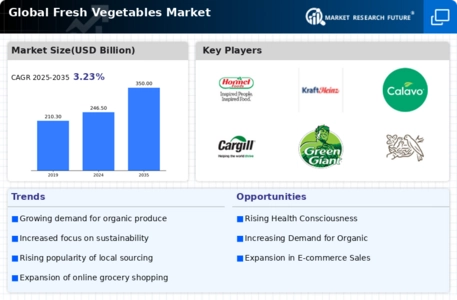
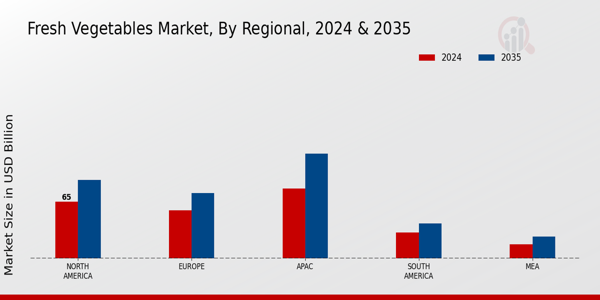


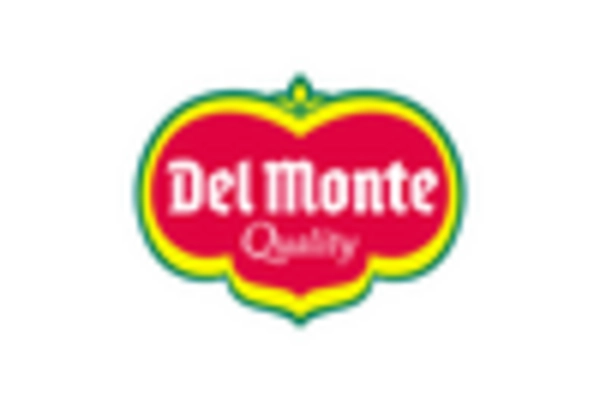

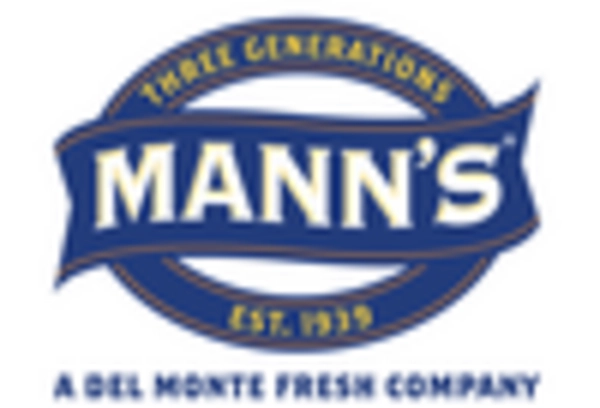
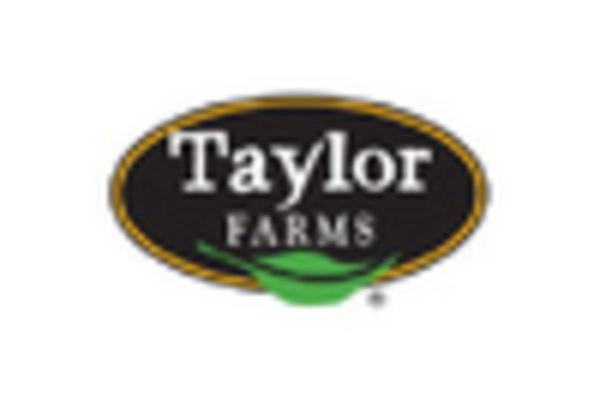

Leave a Comment